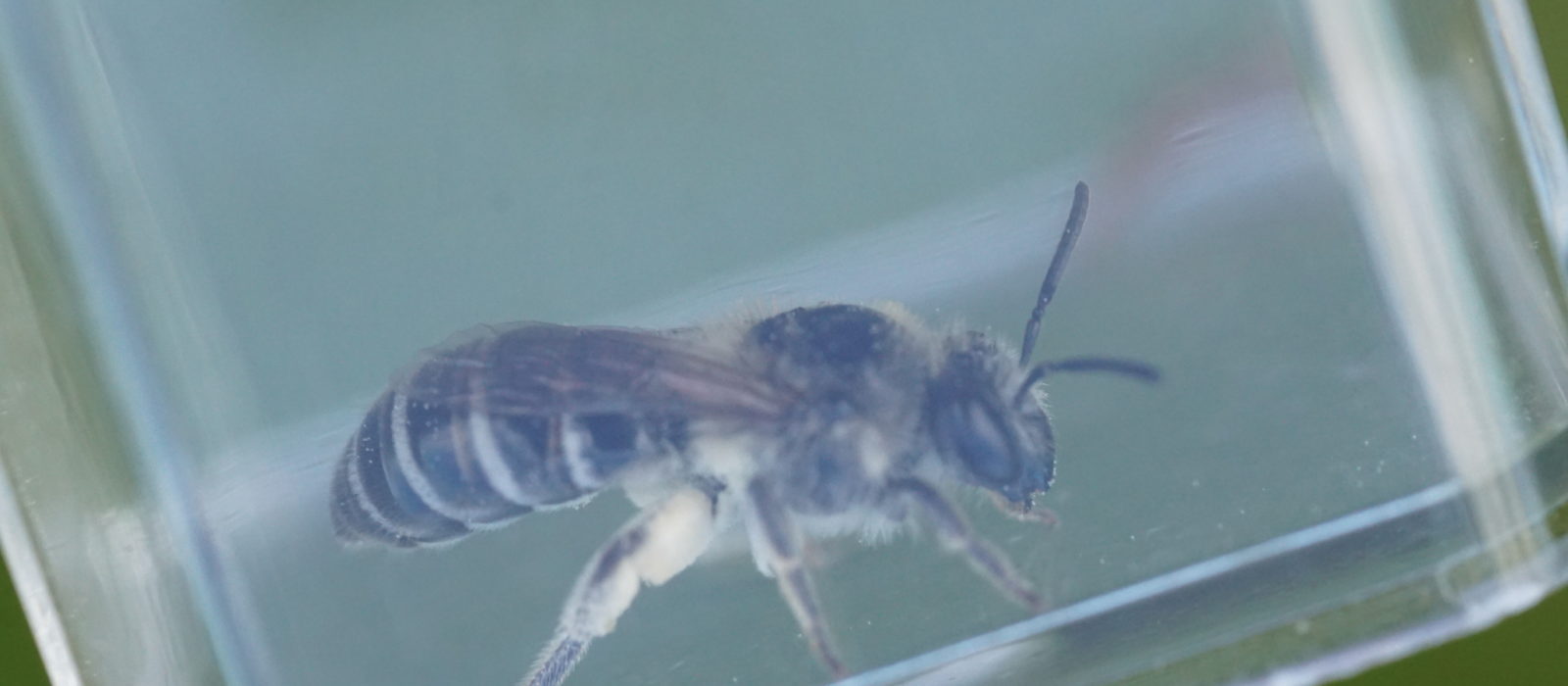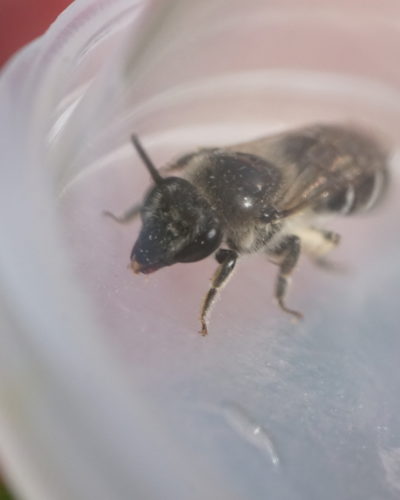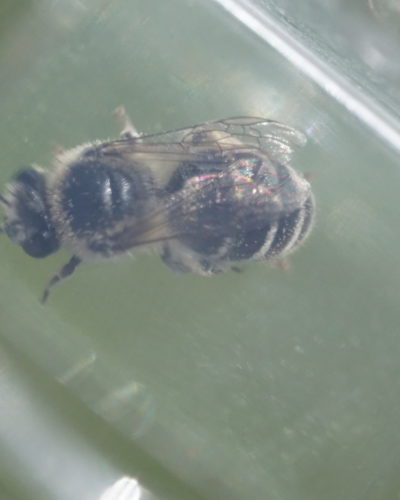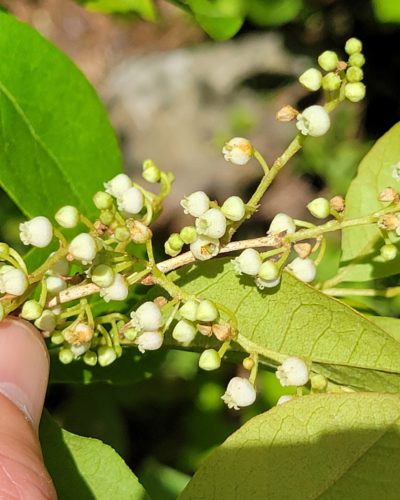An elusive, rarely observed bee was added to the MVAL iNaturalist project on July 10, 2022, when several individuals of Colletes productus were found on a conservation property along the Vineyard’s south shore. C. productus is one of several bee species known to associate very closely with the wetland shrub maleberry, or Lyonia, a relative of the far more common blueberries. Pollen and nectar from maleberry’s flowers represent the main or perhaps the only food source for adults and larvae of these bees. A highly elongated face on C. productus is probably an evolutionary adaption for feeding from the tiny openings on Lyonia flowers. The iNat observation documenting Colletes productus came, predictably, from a large stand of Lyonia. Because of the rarity of this bee, we have obscured the observation coordinates in iNaturalist to protect the population.
This observation was not the first Martha’s Vineyard record for Colletes productus: the only major study of Vineyard bees to date, coordinated by entomologist Paul Goldstein in 2010-2011, documented a single individual at the same south shore site. But reconfirming the presence of the species ten years later is important because it suggests that the population of C. productus is an enduring one. And the overall scarcity of this bee is shown by the fact that this observation was the first one of Colletes productus to be added to iNaturalist.
While some bees are quite general in their use of flowers, specialization like that observed in Colletes productus is by no means rare. Some bees specialize in composite flowers, like asters and goldenrods. Others associate with loosestrife (the genus Lysimachia). Conservation of bee diversity, whether to ensure pollination of wildflowers or for the sake of the bees themselves, therefore requires a solid understanding of bee ecology. Generalist bees will fare well under most conditions, but specialized bees need appropriate plants and possibly other conditions as well, such as appropriate soil types for digging nest burrows.
While the study of bees relies extensively on the collection of specimens, insects should only be collected with appropriate permission and only for inclusion in a property curated collection. Biologist agree that responsible collection is scientifically necessary and does no harm to species at the population level. But digital photography and community science platforms like iNaturalist make it possible to document many important observations using just photos. In this case, the bee was captured in a plastic vial, photographed, and then released onto the same cluster of blossoms it had been found on.
Protecting Rare Species in iNaturalist
In order to safeguard rare species, most naturalists are careful about sharing locations of rarities. iNaturalist obscures the precise location of many – but not all – rare species (that is, anyone viewing the observation will see just a large box within which the organism was found, instead of a pin indicating the location). Keep in mind that you can obscure the locations of any of your observations, for any reason, by selecting “Obscured” or “Private” in the “Geoprivacy” drop-down menu when submitting or editing an observation.
You can share your “Obscured” coordinates with individuals that you follow: go to your profile, click the “Edit account settings and profile” button, select “Relationships,” and click “Trust with hidden coordinates” for the desired iNat user. If you belong to a project in iNat, you can also trust project administrators with hidden coordinates by visiting “Your membership,” accessed in the “About” section at the upper right of the project page. iNat works best with information is shared as freely as possible, and we believe that, in general, coordinates are best left visible. But if privacy or rare species concerns make an observation sensitive, it’s good to know that you can obscure locations when appropriate.
Matt Pelikan is the director of the Martha’s Vineyard Atlas of Life project at BiodiversityWorks.



